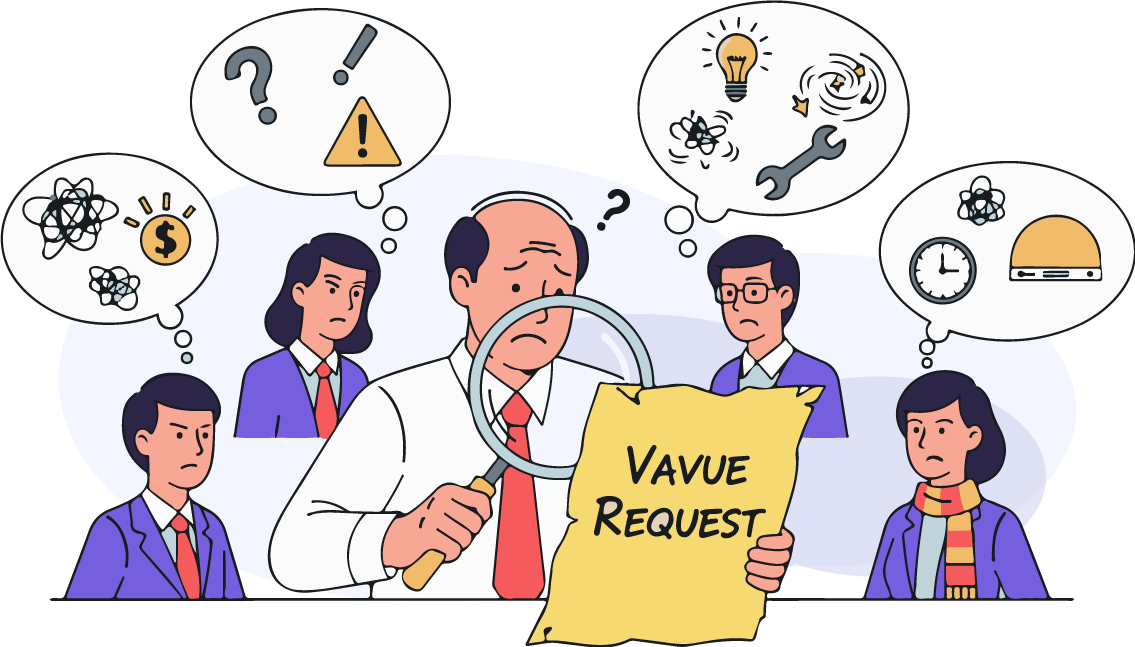Now Reading: Agile Backlog Refinement: Clarifying Stakeholder Requests Case Study
-
01
Agile Backlog Refinement: Clarifying Stakeholder Requests Case Study
Agile Backlog Refinement: Clarifying Stakeholder Requests Case Study
How a product owner at “DataViz Corp” turned the CEO’s ambiguous request to “modernize our dashboard” into a successful, data-driven project.
The Challenge: The One-Liner Mandate
The Product Owner at DataViz Corp received a high-priority mandate from the CEO via a one-sentence email: “Our main dashboard looks dated. We need to modernize it and make it more insightful for our enterprise clients before the end of the quarter.” This request was critically important but entirely subjective and lacked any specific requirements. The development team was hesitant to start, haunted by memories of a previous “redesign” project that turned into a six-month cycle of endless revisions and subjective feedback. “What does ‘modernize’ even mean?” one developer asked. “Does it mean new colors, new charts, or a whole new architecture?”

The Solution: Facilitating a Structured Discovery Process
Instead of trying to guess the CEO’s intent, the Product Owner used the Agile Backlog Refiner as a framework to guide a discovery and clarification conversation. It wasn’t just a backlog tool; it became a collaborative strategy tool.
- Anchoring to a Measurable Goal (Step 1): In the Preparation step, the PO worked with the CEO to translate the vague request into a concrete business objective. In the “Stakeholder Priorities” field, they wrote: “The primary goal is to increase user engagement with the dashboard by 25% and receive positive feedback from our top 5 enterprise clients on the new design.” This immediately gave the project a measurable definition of success.
- Brainstorming Concrete Features (Step 2): They created a single epic: “Dashboard Modernization.” In a collaborative session with the CEO and lead designer, they brainstormed what “modernize” and “insightful” could actually mean in practice. This discussion, prompted by the tool’s structure, led to creating specific PBIs like “Implement Customizable Widgets,” “Add Date-Range Comparison Feature,” “Overhaul Color Palette & Typography,” and “Enhance Data Export Options.” The abstract concept was now a list of tangible features.
- Forcing Strategic Trade-offs (Step 3): With a list of concrete PBIs, the PO went back to the CEO. Using the MoSCoW prioritization view, they asked, “To meet our Q3 goal of increasing engagement, are ‘Customizable Widgets’ a Must Have or a Should Have?” This structured questioning transformed the conversation from subjective opinions (“I like blue”) to strategic trade-offs (“Widgets are more likely to drive engagement than a new color palette”).
- Defining “Done” with User Stories (Step 4): For the top-priority PBIs, they drafted user stories. “Overhaul Visual Design” became “As an enterprise user, I want to see a clean, modern interface with high-contrast data visualizations so that I can quickly understand key metrics and present them in meetings.” This story, along with its specific acceptance criteria (e.g., “All charts must use the new brand color palette”), was presented to the CEO for sign-off, ensuring everyone was aligned on the definition of “done.”
The Outcome: From Ambiguity to Alignment and Action
The guided process turned a potential project disaster into a model of stakeholder collaboration and clear communication.
- Objective Criteria for Success: The vague request was anchored to a measurable goal (increase engagement by 25%), giving the project a clear purpose and a way to measure its success beyond just the CEO’s opinion.
- Deep Stakeholder Buy-In: By actively involving the CEO in the prioritization and definition process, the final plan was not just the PO’s interpretation but a co-created strategy. This dramatically reduced the risk of late-stage “I thought it would be different” feedback.
- An Empowered and Confident Development Team: The developers received a backlog of clear, well-defined user stories with specific acceptance criteria. This eliminated guesswork and allowed them to apply their creativity to building a great solution, not trying to read the CEO’s mind.
The Agile Backlog Refiner provided the essential structure needed to translate a high-level, ambiguous vision into a prioritized, well-defined, and fully aligned product backlog.
Tool Spotlight: How the Refiner Made the Difference
- Step 1 – Preparation Fields: The simple act of filling out the “Stakeholder Priorities” field forced a critical, goal-setting conversation that anchored the entire project to a measurable outcome.
- The Epic-to-PBI Structure (Step 2): The tool’s hierarchy naturally guided the team from a single, vague idea (“the epic”) to a list of concrete, actionable features (“the PBIs”).
- User Story and Acceptance Criteria Fields (Step 4): These fields provided a template for capturing the details. It ensured that for every piece of work, the team defined the user, their need, the benefit, and exactly how to test for its completion.

